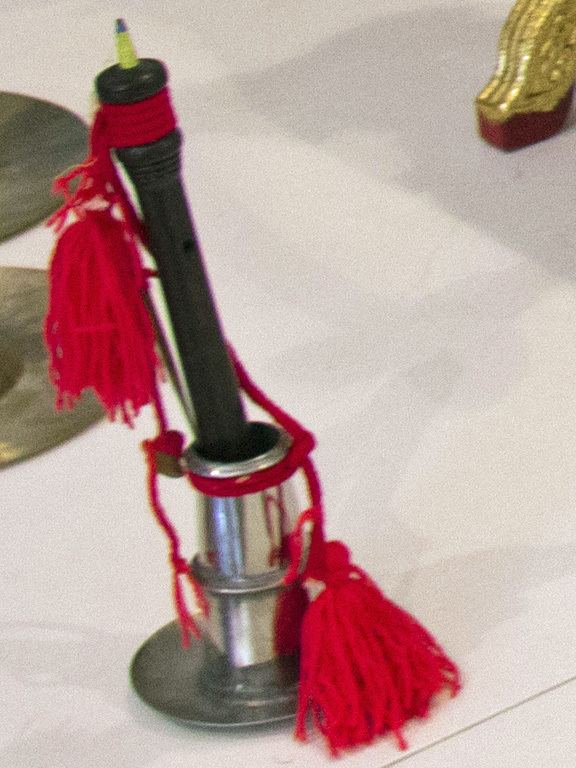 | ||
The hne (Burmese: နှဲ; also spelled hnè) is a conical shawm of double reed used in the music of Myanmar.
Contents
Etymology
The earliest extant written occurrence of the word hne dates to 1491 CE and is likely a Middle Mon loan word, derived from sanoy.
Description
The hne has a sextuple reed (called hnegan), made from the young leaf of the toddy palm, which is soaked for six months. The body of the hne is made of wood, with a conical bore and seven finger holes at the front, set in a straight line, with a bell (ချူ, chu) hung at the top. It has a flaring metal bell and has a loud tone, and is used in an ensemble together with xylophone, tuned gongs, and tuned drums. There are two distinct forms: the smaller form is called the hne galay (နှဲကလေး) whilst the larger is called the hne gyi (နှဲကြီး). The former is used for songs in the ordinary key of the diatonic major scale, while the latter is used for grand style songs in the subdominant mode.
